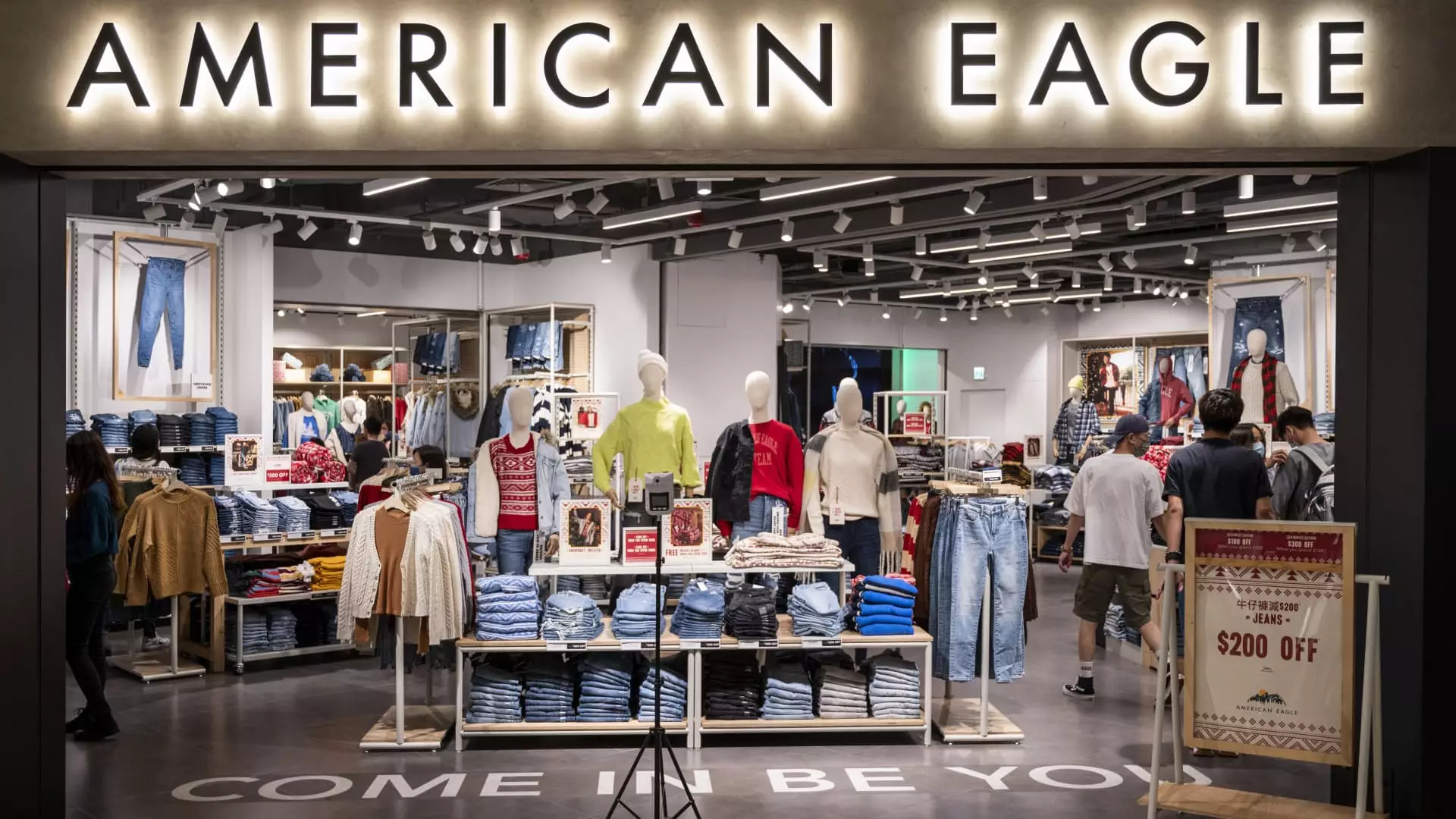On Wednesday, American Eagle Outfitters provided a stark update to its investors that paints a disheartening picture for what lies ahead in 2025. The company’s CEO, Jay Schottenstein, highlighted a “slower start” to the year, a significant warning bell for a brand that thrives on youth trends and consumer enthusiasm. With consumers tightening their belts in response to ongoing inflation and apprehension surrounding international trade dynamics, American Eagle’s forecast has become a hot topic for investors and market analysts alike.
The deflation of consumer spending is not merely a blip; it’s a symptom of deeper economic ailments affecting the retail landscape. As American Eagle prepares for a Spring season it hopes will bring revitalization, the cold reality is that many consumers may be choosing necessity over novelty in their purchasing decisions. The firm’s statement underscores a shift in purchasing power and sentiment that all retail businesses must navigate with extreme caution.
Reality Check: Collateral Damage in Retail
The most alarming takeaway is the across-the-board warning issued by American Eagle, reflective of a broader trend that transcends individual company performance. Many retailers, from the shaky to the stalwart, have echoed cautionary messages about their financial outlooks, suggesting the echoes of a slowing economy are growing louder. When even the best-performing firms are revising down their expectations, a stark realization sets in: retail is in a precarious state.
Shares of American Eagle dipped by nearly 5% after the announcement, illuminating the raw nerve of market sentiment. Not only do these fluctuations hint at looming recession fears but they also point to the compounding effect of relentless inflation and the specter of tariffs, which weigh heavily on profits. As consumers grapple with shrinking disposable income, the apparel sector—often deemed non-essential—suffers disproportionately.
The Double-Edged Sword of Holiday Performance
While American Eagle reported mixed results for the holiday season, achieving earnings per share slightly above analyst expectations, one can’t help but perceive a duality in these figures. Comparable sales rose by 3%, a beacon of good news against a backdrop of generally lackluster consumer demand. However, it’s crucial to remember that the previous fiscal year had benefited from an additional selling week, skewing comparisons. In the world of retail, context is everything; what looks like growth could merely be a mirage underlined by temporary favorable conditions.
American Eagle’s primary growth driver, Aerie, showcased a remarkable 6% increase in comparable sales—an encouraging sign amid uncertainty. However, the overarching environment remains rife with unpredictability. The pressure to sustain this growth, especially for a sub-brand, raises uncomfortable questions for American Eagle regarding its overarching strategic priorities. Will they become too fixated on Aerie at the risk of stagnating their flagship brand?
Forecasts of Decline: The Harsh Road Ahead
Looking forward, American Eagle anticipates a mid-single-digit sales decline in the current quarter, while analysts expect a minimal increase. This is more than a mere statistical divergence; it encapsulates the market’s sentiment shift where optimism for growth waxes and wanes based on external economic factors.
For the entire year, American Eagle is slashing its sales expectations, predicting a slight downturn contrary to the 3% anticipated growth from analysts. This drastic adjustment signals not just turbulence for American Eagle but reflects broader economic trends impacting consumer psychology and discretionary spending.
Contextual Backdrop: A Nation of Economic Discontent
Underpinning these struggles is a backdrop laden with disquiet. Consumer confidence dipped dramatically, experiencing its most significant drop since 2021, coupled with waning job growth and rising unemployment rates. These indicators scream caution—a message that encompasses both vast retailers like American Eagle and the mom-and-pop storefronts lining America’s streets. The unpredictable consequences of geopolitical tensions, particularly President Trump’s trade policies, loom large over the market and threaten to undermine any signs of recovery.
It is a crude reality for consumers and businesses alike; discretionary retailers must brace for a harsher winter. Relationships and interactions with brands will shift as budget-consciousness becomes the norm, compelling companies like American Eagle to rethink their strategies if they are to survive the next storm.
American Eagle’s current path is one fraught with challenges but also laden with the potential for strategic overhaul. How they manage to tighten their focus and navigate economic uncertainties remains to be seen, but the signs indicate a journey of introspection is urgently needed.

